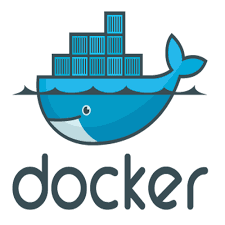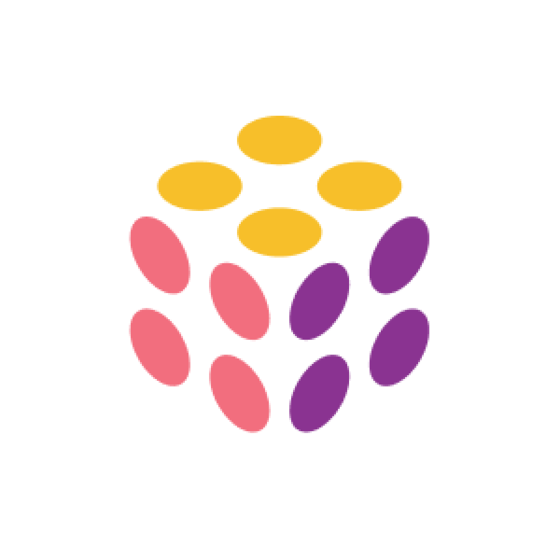Best iPaaS Software Shortlist
Here’s my shortlist of the best iPaaS software:
Our one-on-one guidance will help you find the perfect fit.
When your tools don’t integrate properly, it slows everything down. Maybe your team is manually transferring data between platforms, or key workflows are breaking because APIs aren’t syncing the way they should. You might be missing customer insights, duplicating effort, or delaying key decisions because your systems aren’t aligned.
That’s where iPaaS software can help. These platforms are built to connect cloud apps, automate data flows, and make sure your systems stay in sync without constant hands-on management. Whether you're trying to unify marketing data, streamline operations, or connect product and support tools, iPaaS solutions can simplify the mess.
I’ve worked directly with SaaS teams struggling to untangle these same challenges. This guide is based on that hands-on experience—what actually works when you're trying to build reliable, flexible integrations. I’ll walk you through tools that stand out not just for their features, but for how they solve real integration problems.
Why Trust Our Software Reviews
We’ve been testing and reviewing SaaS development software since 2023. As tech experts ourselves, we know how critical and difficult it is to make the right decision when selecting software. We invest in deep research to help our audience make better software purchasing decisions.
We’ve tested more than 2,000 tools for different SaaS development use cases and written over 1,000 comprehensive software reviews. Learn how we stay transparent & check out our software review methodology.
Best iPaaS Software Summary
This comparison chart summarizes pricing details for my top iPaaS software selections to help you find the best one for your budget and business needs.
| Tool | Best For | Trial Info | Price | ||
|---|---|---|---|---|---|
| 1 | Best for small businesses | Free plan available | From $19.99/month (billed annually) | Website | |
| 2 | Best for enterprise solutions | Free trial available | Pricing upon request | Website | |
| 3 | Best for data integration | Free trial + demo available | Pricing upon request | Website | |
| 4 | Best for hybrid cloud environments | Free trial + demo available | From $99/month | Website | |
| 5 | Best for speed of deployment | Free demo available | Pricing upon request | Website | |
| 6 | Best for workflow automation | Free trial + demo available | Pricing upon request | Website | |
| 7 | Best for ecommerce integrations | Free trial + demo available | Pricing upon request | Website | |
| 8 | Best for AI-driven integrations | Free trial + demo available | From $200/month | Website | |
| 9 | Best for Microsoft ecosystem users | Free trial available | Pricing upon request | Website | |
| 10 | Best for user-friendly interface | 14-day free plan available | From $19.99/month (billed annually) | Website |
-

Docker
Visit WebsiteThis is an aggregated rating for this tool including ratings from Crozdesk users and ratings from other sites.4.6 -

Pulumi
Visit WebsiteThis is an aggregated rating for this tool including ratings from Crozdesk users and ratings from other sites.4.8 -

GitHub Actions
Visit Website
Best iPaaS Software Review
Below are my detailed summaries of the best iPaaS software that made it onto my shortlist. My reviews offer a detailed look at the key features, pros & cons, integrations, and ideal use cases of each tool to help you find the best one for you.
Zapier is a no-code automation platform for small businesses and individuals looking to connect their apps and automate workflows. It helps users automate repetitive tasks by creating 'Zaps' that link over 8,000 applications, saving time and reducing manual effort.
Why I picked Zapier: Zapier is ideal for small businesses due to its user-friendly interface and extensive app connectivity. It allows you to automate tasks without any coding skills, making it accessible for non-technical users. Key features include customizable workflows, multi-step Zaps, and the ability to set triggers and actions for various apps. Small teams can quickly set up automations to improve productivity and operational efficiency.
Standout features & integrations:
Features include a user-friendly drag-and-drop interface that lets you build workflows without coding. You can create multi-step Zaps to automate complex processes and set filters to control when Zaps run. Zapier also offers scheduling to automate tasks at specific times.
Integrations include Salesforce, Google Sheets, Slack, Trello, Mailchimp, HubSpot, Asana, Shopify, QuickBooks, and Microsoft Teams.
Pros and cons
Pros:
- Flexible workflow customization
- Easy to set up automations
- Wide range of app connections
Cons:
- Limited advanced features in the free plan
- Higher cost for premium features
MuleSoft Anypoint is an integration platform designed for enterprises needing to connect applications, data, and devices. It enables large organizations to build and manage APIs and integrations at scale, offering flexibility and control over complex environments.
Why I picked MuleSoft Anypoint: It caters to enterprise solutions with its API-led connectivity approach, which is ideal for large-scale operations. The platform offers a unified solution for API management, design, and deployment. With features like API gateways and developer portals, your team can efficiently manage and monitor integrations. Its scalability ensures that as your business grows, your integration capabilities can expand without a hitch.
Standout features & integrations:
Features include a unified platform for API management, which simplifies the process of creating, publishing, and managing APIs. The platform offers a drag-and-drop interface for designing integrations, making it accessible even for those with limited coding experience. It also provides analytics to monitor API performance and usage, helping you optimize your operations.
Integrations include Salesforce, SAP, Workday, ServiceNow, Microsoft Dynamics 365, AWS, Google Cloud, Oracle, NetSuite, and Jira.
Pros and cons
Pros:
- Developer-friendly design environment
- Strong API management capabilities
- Supports complex integration scenarios
Cons:
- Higher cost for small businesses
- Steep learning curve for beginners
Talend is a data integration platform tailored for businesses that need to consolidate and manage large volumes of data. It serves organizations looking to improve their data quality and streamline data management processes.
Why I picked Talend: Talend excels in data integration with its ability to handle diverse data sources and formats. It offers a rich set of tools for data cleansing, transformation, and loading, making it perfect for businesses focused on data quality. With its open-source roots, the platform provides flexibility and extensive customization options. Talend's strong focus on data governance ensures that your data remains accurate and reliable.
Standout features & integrations:
Features include a comprehensive suite of data quality tools that help you cleanse and standardize data. The platform's drag-and-drop interface simplifies the process of designing data workflows. It also offers real-time data processing to keep your data up-to-date.
Integrations include Salesforce, SAP, AWS, Google Cloud, Microsoft Azure, Snowflake, Oracle, Hadoop, MongoDB, and Marketo.
Pros and cons
Pros:
- Real-time data processing capabilities
- Extensive customization options
- Strong data governance features
Cons:
- Learning curve for advanced features
- Performance issues with large datasets
Boomi is an integration platform as a service (iPaaS) that caters to businesses operating in hybrid cloud environments. It helps organizations connect applications, data, and people to enhance operational efficiency and data management.
Why I picked Boomi: It excels in hybrid cloud environments, offering you the flexibility to integrate both on-premise and cloud-based applications. Boomi provides a visual interface that simplifies the creation of complex integrations. With its pre-built connectors and templates, your team can accelerate the deployment process. The platform's real-time data synchronization ensures your data is always current and accessible.
Standout features & integrations:
Features include a drag-and-drop interface that makes it easy to design and manage integrations. The platform offers real-time data processing to keep your operations up-to-date. Boomi also provides extensive monitoring and analytics tools to help you optimize your integration processes.
Integrations include Salesforce, SAP, NetSuite, Oracle, Microsoft Dynamics 365, Workday, Amazon Web Services, Google Cloud, Slack, and Zendesk.
Pros and cons
Pros:
- Strong support for hybrid environments
- Extensive monitoring and analytics
- Drag-and-drop integration design
Cons:
- High resource usage for large deployments
- Potential delays in support response
Jitterbit Harmony is an integration platform designed for businesses that need rapid deployment and agile integration solutions. It serves companies looking to quickly connect applications and data across various systems.
Why I picked Jitterbit Harmony: It excels in speed of deployment, making it ideal for teams that need quick solutions. The platform offers an intuitive design, allowing your team to set up integrations without extensive training. With its pre-built templates, you can accelerate your integration projects. Jitterbit's real-time data synchronization ensures your data remains current and accessible.
Standout features & integrations:
Features include an easy-to-use graphical interface that simplifies the creation of integrations. The platform provides pre-built templates that save you time when setting up new connections. It also supports real-time data synchronization to ensure your data is always up-to-date.
Integrations include Salesforce, SAP, NetSuite, ServiceNow, Microsoft Dynamics 365, Oracle, Workday, Amazon Web Services, Google Cloud, and Slack.
Pros and cons
Pros:
- Fast deployment for new users
- Pre-built templates available
- Real-time data synchronization
Cons:
- Limited customization options
- Requires internet for optimal performance
Workato is an integration and automation platform for businesses seeking to automate workflows across various applications. It caters to teams looking to enhance productivity by connecting systems and automating repetitive tasks.
Why I picked Workato: It excels in workflow automation, offering your team the ability to automate complex processes easily. The platform provides pre-built automation recipes, allowing you to set up workflows quickly without coding. Workato's ability to handle both simple and complex automations makes it versatile for different business needs. Its user-friendly interface ensures that even non-technical members of your team can create and manage workflows effectively.
Standout features & integrations:
Features include an intuitive drag-and-drop interface that simplifies the creation of workflows. The platform offers machine learning capabilities to optimize automation processes. You can also leverage community-shared recipes to accelerate your automation projects.
Integrations include Salesforce, Slack, ServiceNow, NetSuite, Marketo, HubSpot, Zendesk, QuickBooks, Dropbox, and Microsoft Teams.
Pros and cons
Pros:
- Intuitive interface for non-tech users
- Community-shared resources
- Machine learning optimization
Cons:
- Advanced features need technical skills
- Limited support for niche applications
Celigo is an integration platform designed primarily for e-commerce businesses looking to connect their various applications and automate processes. It serves companies that need to streamline operations and improve data flow between systems.
Why I picked Celigo: It specializes in e-commerce integrations, providing your team with tools to connect online stores with other business applications. The platform offers pre-built connectors that simplify the integration process for common e-commerce platforms. Celigo allows you to automate order processing, inventory management, and other critical functions. Its user-friendly interface helps you set up and manage integrations without needing extensive technical expertise.
Standout features & integrations:
Features include a user-friendly dashboard that gives you a clear view of your integrations. The platform offers customizable workflows to fit your specific business needs. It also provides error management tools to help you quickly identify and resolve issues.
Integrations include Shopify, Magento, Amazon, NetSuite, Salesforce, QuickBooks, Zendesk, Microsoft Dynamics 365, SAP, and Google Workspace.
Pros and cons
Pros:
- User-friendly dashboard interface
- Customizable workflows available
- Pre-built connectors for quick setup
Cons:
- Initial setup can be time-consuming
- Support response times can vary
IBM App Connect is an integration platform tailored for businesses looking to leverage AI in their integration processes. It serves enterprises that need to connect applications and automate workflows with intelligent insights.
Why I picked IBM App Connect: It excels in AI-driven integrations, providing your team with smart automation capabilities. The platform enables you to connect apps and data with AI-assisted mapping and recommendations. With its intuitive interface, setting up complex workflows becomes straightforward. IBM App Connect's ability to handle large volumes of data efficiently is a major advantage for enterprises.
Standout features & integrations:
Features include an AI-assisted mapping tool that simplifies the process of connecting different data sources. The platform offers real-time monitoring and alerts to keep you informed of any issues. It also provides a visual flow editor, allowing you to design integrations with ease.
Integrations include Salesforce, SAP, Oracle, Microsoft Dynamics 365, Google Cloud, Amazon Web Services, Slack, Dropbox, Box, and IBM Watson.
Pros and cons
Pros:
- Supports intelligent automation
- Visual flow editor for design
- Efficient handling of large data volumes
Cons:
- Requires advanced technical skills
- Limited customization for specific needs
Azure Logic is an integration platform for businesses operating within the Microsoft ecosystem. It helps organizations automate workflows and processes by connecting various applications and services.
Why I picked Azure Logic: It integrates seamlessly with Microsoft products, making it ideal for users already invested in the Microsoft environment. The platform offers pre-built connectors for quick setup and deployment. Its scalability allows your team to handle large-scale integrations efficiently. With its pay-as-you-go pricing model, you can control costs based on your usage.
Standout features & integrations:
Features include a visual designer that simplifies workflow creation, allowing you to drag and drop elements to build processes. The platform provides a pay-as-you-go pricing model, which helps you manage costs effectively. It also supports event-driven triggers to automate tasks based on specific conditions.
Integrations include Microsoft 365, Dynamics 365, SharePoint, Salesforce, SAP, SQL Server, Dropbox, Twitter, Google Drive, and GitHub.
Pros and cons
Pros:
- Visual designer for easy workflow creation
- Scalable for large deployments
- Pay-as-you-go pricing model
Cons:
- Limited support for non-Microsoft services
- Complex for beginners
Integrately is an integration platform aimed at businesses and individuals looking to automate workflows without complexity. It’s designed for users who need straightforward and quick automation solutions to connect their apps and services.
Why I picked Integrately: It offers a user-friendly interface that simplifies automation for everyone, especially those without technical skills. You can set up workflows in just a few clicks, making it accessible for small teams and solo entrepreneurs. The platform provides pre-built automation scenarios, so you don’t have to start from scratch. With its focus on ease of use, Integrately helps you save time and effort in managing your tasks.
Standout features & integrations:
Features include a simple setup process that allows you to create automations in a few clicks. The platform offers pre-built automation scenarios to get you started quickly. It also provides real-time monitoring to keep track of your automation performance.
Integrations include Salesforce, Slack, Trello, Google Sheets, Shopify, Mailchimp, HubSpot, QuickBooks, Microsoft Teams, and Asana.
Pros and cons
Pros:
- Pre-built scenarios available
- Real-time monitoring for performance
- Quick automation deployment
Cons:
- May lack advanced features
- Not suited for complex workflows
Other iPaaS Software
Here are some additional iPaaS software options that didn’t make it onto my shortlist, but are still worth checking out:
- SnapLogic
For data integration
- HubSpot Operations Hub
For marketing workflows
- StarfishETL
For CRM integrations
- SAP Integration Suite
For enterprise-grade applications
- Tines
For security automation
- Appypie
For non-tech users
- Hightouch
For data activation
iPaaS Software Selection Criteria
When selecting the best iPaaS software to include in this list, I considered common buyer needs and pain points like integration complexity and scalability. I also used the following framework to keep my evaluation structured and fair:
Core Functionality (25% of total score)
To be considered for inclusion in this list, each solution had to fulfill these common use cases:
- Connect multiple applications
- Automate workflows
- Provide real-time data synchronization
- Support data transformation
- Enable API management
Additional Standout Features (25% of total score)
To help further narrow down the competition, I also looked for unique features, such as:
- AI-driven process automation
- Customizable dashboards
- Advanced analytics and insights
- Pre-built integration templates
- Scalability for enterprise use
Usability (10% of total score)
To get a sense of the usability of each system, I considered the following:
- Intuitive interface design
- Ease of navigation
- Clarity of instructions
- Minimal learning curve
- Customization options
Onboarding (10% of total score)
To evaluate the onboarding experience for each platform, I considered the following:
- Availability of training videos
- Access to interactive product tours
- Use of templates for setup
- Availability of webinars or live training
- Presence of chatbots for assistance
Customer Support (10% of total score)
To assess each software provider’s customer support services, I considered the following:
- Availability of 24/7 support
- Access to a knowledge base
- Response time for inquiries
- Quality of live chat support
- Availability of dedicated account managers
Value For Money (10% of total score)
To evaluate the value for money of each platform, I considered the following:
- Competitive pricing
- Range of features offered
- Flexibility in pricing plans
- Cost compared to similar tools
- Return on investment potential
Customer Reviews (10% of total score)
To get a sense of overall customer satisfaction, I considered the following when reading customer reviews:
- Overall satisfaction ratings
- Commonly mentioned pros and cons
- Frequency of updates and improvements
- User feedback on performance
- Testimonials from industry experts
How to Choose iPaaS Software
It’s easy to get bogged down in long feature lists and complex pricing structures. To help you stay focused as you work through your unique software selection process, here’s a checklist of factors to keep in mind:
| Factor | What to Consider |
| Scalability | Ensure the solution can grow with your business needs. Look for platforms that handle increased data and user loads efficiently. |
| Integrations | Check if the software supports essential apps your team uses. A wide range of native integrations is a plus. |
| Customizability | Verify that the platform complies with industry standards and protects your data. Look for encryption and regular security updates. |
| Ease of Use | Make sure the platform is user-friendly. A steep learning curve can slow down your team's productivity. |
| Budget | Consider your budget constraints. Compare costs against features and benefits to ensure you’re getting value for money. |
| Security Safeguards | Verify the platform complies with industry standards and protects your data. Look for encryption and regular security updates. |
| Support | Assess the level of customer support available. 24/7 support and a comprehensive knowledge base can be valuable resources. |
| Performance | Look for platforms with high uptime and fast processing speeds to keep your operations running smoothly. |
What Is iPaaS Software?
iPaaS software is a cloud-based integration platform that connects different applications and data sources. IT professionals and business analysts typically use these tools to automate workflows and improve data flow across systems.
Drag-and-drop interfaces, pre-built connectors, and real-time data processing capabilities help with ease of use and efficiency. Overall, iPaaS tools simplify connecting and managing multiple applications in a business environment.
Features of iPaaS Software
When selecting iPaaS software, keep an eye out for the following key features:
- Scalability: Allows the platform to grow with your business, handling increased data and user loads efficiently.
- Integrations: Connects a wide range of applications and services, ensuring smooth data flow and communication.
- Customizability: Offers tailored workflows and fields to match your specific business needs and processes.
- Ease of use: Provides an intuitive interface that reduces the learning curve and boosts productivity for your team.
- Security safeguards: Protects your data with encryption and complies with industry standards for peace of mind.
- Real-time data processing: Keeps data up-to-date and accessible, which is crucial for timely decision-making.
- Drag-and-drop interface: Simplifies the creation of workflows, making automation accessible even for non-tech users.
- Pre-built connectors: Saves time by offering ready-made solutions for connecting popular applications.
- Monitoring and analytics: Offers insights into integration performance, helping you optimize processes and resolve issues quickly.
- API management: Facilitates the creation, publication, and management of APIs, enhancing connectivity and integration capabilities.
Benefits of iPaaS Software
Implementing iPaaS software provides several benefits for your team and your business. Here are a few you can look forward to:
- Improved efficiency: Automates repetitive tasks, freeing up time for your team to focus on more strategic activities.
- Enhanced connectivity: Integrates various applications and data sources, ensuring smooth communication and data flow across systems.
- Scalability: Grows with your business, adapting to increased data and user demands without compromising performance.
- Cost savings: Reduces the need for custom development and maintenance, lowering operational costs over time.
- Data accuracy: Offers real-time data processing, ensuring that your team always has access to the most current information for decision-making.
- User-friendly design: Features like drag-and-drop interfaces make it easy for non-technical users to create and manage workflows.
- Security compliance: Protects sensitive data with industry-standard security measures, providing peace of mind for your business.
Costs and Pricing of iPaaS Software
Selecting iPaaS software requires an understanding of the various pricing models and plans available. Costs vary based on features, team size, add-ons, and more. The table below summarizes common plans, their average prices, and typical features included in iPaaS software solutions:
Plan Comparison Table for iPaaS Software
| Plan Type | Average Price | Common Features |
| Free Plan | $0 | Basic integrations, limited workflows, and community support. |
| Personal Plan | $5-$25 /user /month | More integrations, increased workflows, and basic analytics. |
| Business Plan | $30-$100 /user /month | Advanced integrations, unlimited workflows, and enhanced support. |
| Enterprise Plan | $100+ /user /month | Custom integrations, dedicated support, and advanced security features. |
iPaaS Software FAQs
Here are some answers to common questions about iPaaS software:
How does an iPaaS work?
An iPaaS interconnects data and applications, establishing integration flows that automate specific business processes for efficiency. You can use these flows to onboard employees, manage order processing, or streamline credit applications. This automation reduces manual effort and speeds up operations.
What are the disadvantages of iPaaS?
With iPaaS, you might have limited control over the underlying technology stack, which can restrict customization or optimization for your specific needs. This could be a challenge if your business requires highly tailored solutions. Additionally, reliance on third-party infrastructure can lead to concerns about data security and compliance.
What is the difference between iPaaS and PaaS?
iPaaS focuses on integrating apps, devices, and systems, while PaaS provides a platform for building, running, and managing applications. iPaaS is about connecting existing systems, whereas PaaS is about creating new applications. Understanding these differences helps you choose the right solution for your needs.
What is the difference between iPaaS and embedded iPaaS?
Embedded iPaaS lets you build customer-facing integrations, while iPaaS helps with internal integrations. They cater to different teams and use cases, with embedded iPaaS often used by product teams to enhance customer experiences. Knowing which suits your business needs can optimize your integration strategy.
How secure is an iPaaS platform?
Security in iPaaS platforms involves data encryption, compliance with industry standards, and regular security updates. It’s important to assess the security measures of any iPaaS provider to ensure they meet your organization’s requirements. This ensures data protection and builds trust with stakeholders.
Can iPaaS handle real-time data processing?
Yes, many iPaaS solutions support real-time data processing, which keeps your data current and accessible for decision-making. This capability is crucial for businesses that rely on timely information to drive operations and strategy. Real-time processing can enhance responsiveness and operational efficiency.
What's Next?
Boost your SaaS growth and leadership skills. Subscribe to our newsletter for the latest insights from CTOs and aspiring tech leaders. We'll help you scale smarter and lead stronger with guides, resources, and strategies from top experts!
























